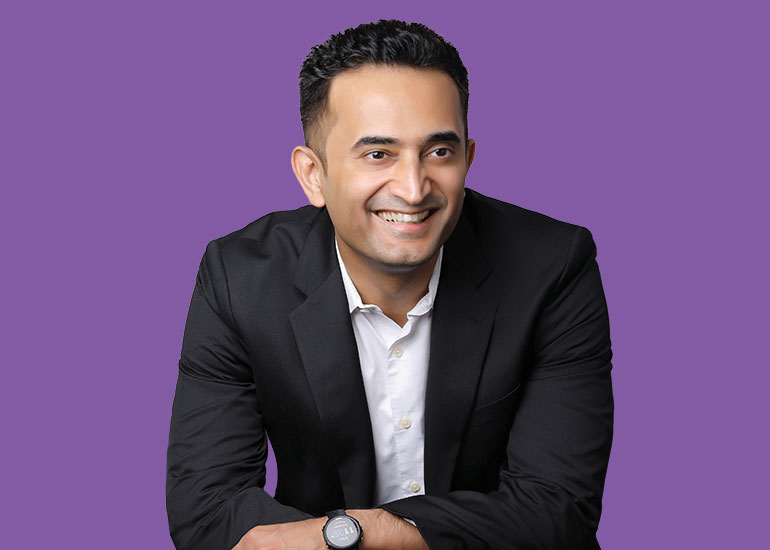Q] What was the inspiration behind the #NeendBhagaoTaazgiJagao campaign? How did you arrive at the ‘no more morning goof-ups’ insight?
Creating a memorable proposition depends on understanding the right consumer problem to solve and match it with the benefits that the brand provides. The fact that people often wake up feeling groggy and sluggish, allows us to present our product as a solution. This is because, in addition to maintaining oral health and hygiene, brushing helps to freshen up in the morning, especially when you use a toothpaste like Colgate Max Fresh. We felt that there was a beautiful proposition and brand fit. So, we asked our agency partners to bring it alive in a story where Colgate Max Fresh’s instant freshness helps resolve morning goof-ups.
Q] Please tell us more about the timing and media plan for the campaign.
Usually, we look at what we call the ‘half-life for a campaign’ approach, where over a 12 to 15 months period, depending on the way the previous campaign has performed, we tend to go for a refresh. The last campaign that we launched for Colgate MaxFresh was around the same time last year. As far as the media plan is concerned, we typically prioritise a multimedia reach. Television is important. It gives us the baseline reach in our target segment. A significant percentage of our spend goes to Digital. We’re also evaluating influencer programmes to drive engagement on social media, given the fact that it’s a very playful thought and a powerful insight. Additionally, we will also be looking at Print and Outdoor.
Q] How are different segments performing for Colgate and which is the fastest-growing one right now?
Our brands are performing well this year. They offer different benefits for consumers. For instance, the proposition of Colgate Strong Teeth is replenishment and nourishment which we articulate as ‘Paste Hi Nahi, Poshan Hai Yeh’. The campaign is live right now. So is the campaign for Colgate Visible White which is in the beauty space. It targets premium customers with the value-added benefit of shinier, whiter teeth. We also have the new MaxFresh campaign that talks about the benefits of instant freshness in a playful manner.

Q] What about the herbal segment? Recently we had a statement from Colgate saying that it hasn’t performed as well as it was expected to.
We look at our brands in terms of the benefits they provide to the consumers - strong teeth, freshness, cavity protection, etc. Having said that, yes, we have seen a plateauing of the Herbal/ Ayurvedic segment. That’s what the data for the past few months tells us. It’s a recent phenomenon. However, we don’t read too much into it because we look at each segment from the perspective of being able to offer products with better and more persuasive benefits that can drive brand preference.
Q] Category penetration or evolution, what is your main concern in the rural and urban markets currently?
As per the data available, approximately 80% of urban Indians don’t brush their teeth at night. It’s a massive number compared to developed countries like Europe and the US. Dentists recommend brushing twice a day, at morning and night, for better dental/oral health. It’s rather important to brush at night because when you sleep, saliva production reduces, which leads to more bacterial build-up. We have data to show that there is a chance of 50% reduction in cavity formation if you brush at night. So, this not only presents a huge opportunity for us, but as oral care category leaders, it is our job to drive the habit of brushing at night. We are trying to do this with ‘The Sweet Truth’ campaign that’s live right now.
In rural, data shows that approximately 55% of people do not brush every day. That number is upwards of 75-80% in markets like Uttar Pradesh and Bihar. Therefore, our objective in rural areas is to get consumers in select markets to brush using a toothbrush and toothpaste every single day, because many of them use other things like dantun, etc.
Q] Given the diverse problems and needs to be addressed, how have you tailored your marketing strategy in these markets?
Interestingly, the urban / elite tier of Indian consumers is increasingly becoming difficult to reach through traditional advertising. A lot of them are cord-cutters and are on OTT right now. On the other end is deep rural, which is also very difficult to reach because people there may not even have a television. So, we have media reach challenges on both ends of the spectrum in India that we are trying to solve. Many interesting innovations are being looked at in both Digital and traditional media. For example, we’re using wall painting in markets like Uttar Pradesh and Bihar where television has low reach. In the urban markets, we’re trying to sell portfolios that have value-added benefits like Colgate Total and Colgate Visible White.
Q] What is your priority on the distribution front?
Distribution is the strength of Colgate. We are amongst the best-distributed FMCG companies in the country. Currently, our focus is on ensuring that the right SKU of the brand is available in the right store. We have designed multiple programmes for that. For example, ‘The Smile Store’ is an AI-enabled initiative wherein we try to look at multiple signals, including historical data and the location, to arrive at the right set of SKUs and brands that we can sell through a particular store. This ensures that the shoppers who go there are serviced adequately. We are seeing early dividends, and this is something we’ll continue to do as we increase the coverage of these stores. That’s the primary distribution objective we have at this point.























